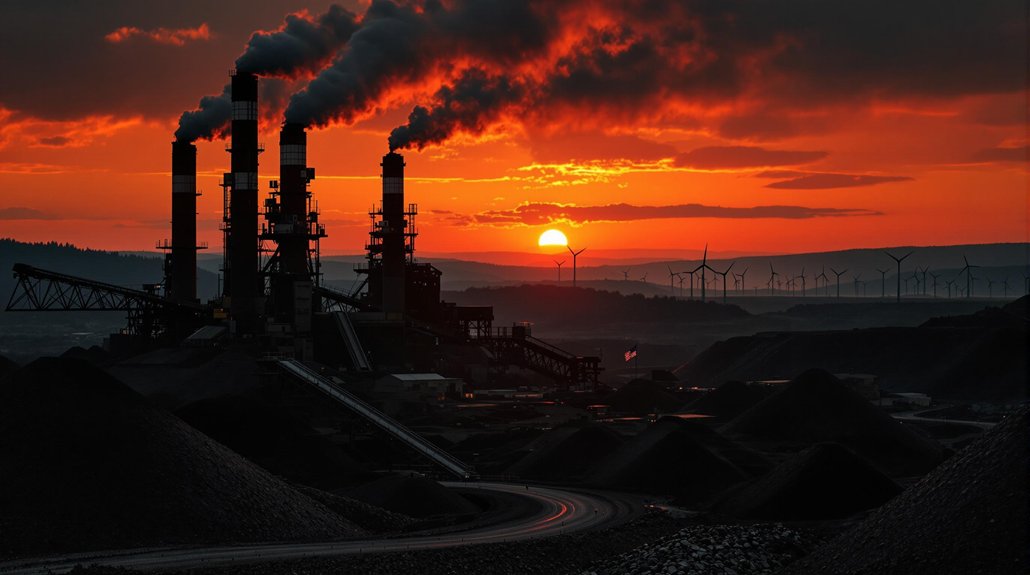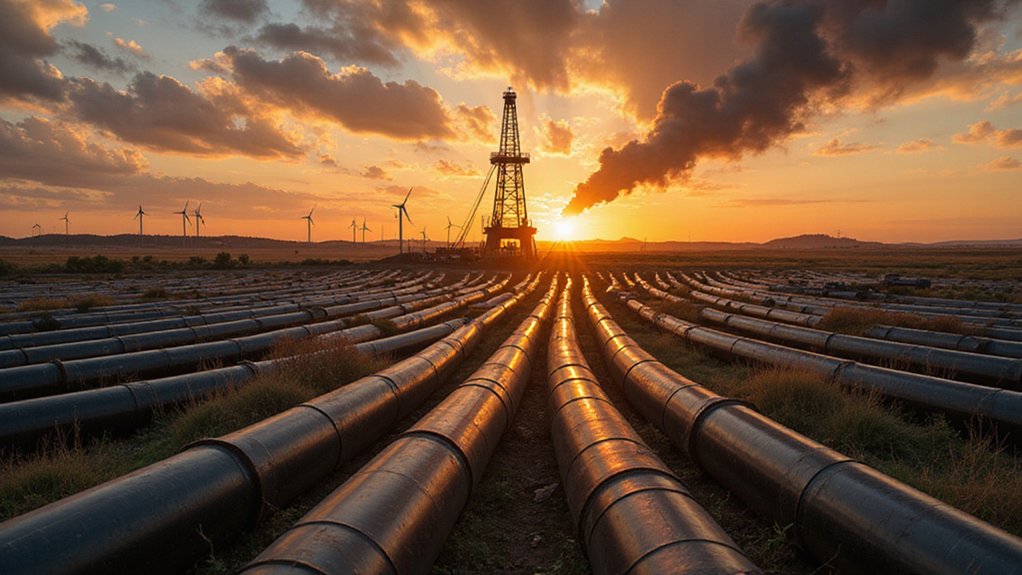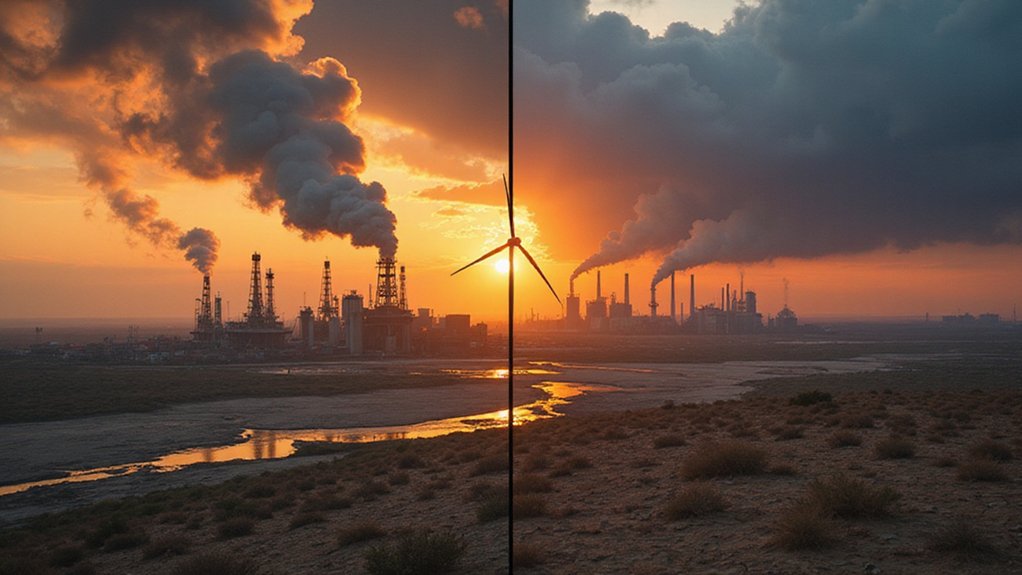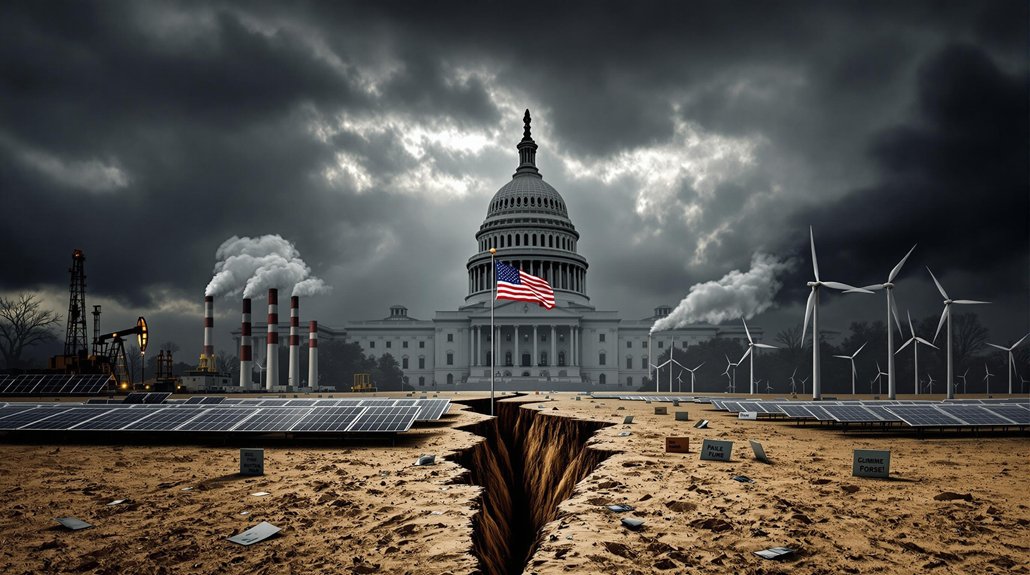President Trump signed executive orders aiming to revive America’s struggling coal industry. The directives lift mining barriers and keep aging plants operational – all for “energy dominance.” It’s a tough sell. Coal generates just 16% of U.S. electricity while natural gas dominates at 43%. Market forces favor cheaper alternatives, making coal’s comeback questionable. Clean coal technologies remain expensive and unproven. The economic and environmental battle continues beneath the surface.
President Trump signed sweeping executive orders this week in a bold push to bring America’s coal industry back from the dead. The April 8 directives aim to breathe life into a sector that’s been steadily losing ground for years. Federal agencies must now lift barriers to coal mining, end Obama-era restrictions on federal coal leasing, and even keep aging power plants running that were slated for retirement. Talk about a Hail Mary pass.
The administration claims these moves will guarantee affordable, reliable energy for everything from homes to energy-hungry data centers powering AI technologies. They’re pitching coal as America’s ticket to “energy dominance” on the global stage. Because nothing says 21st century like doubling down on 19th century technology.
Let’s get real about the numbers, though. Coal currently generates just 16% of U.S. electricity, while natural gas provides 43% and renewables have climbed to 20%. The market hasn’t been kind to coal, with cheaper alternatives winning out despite previous attempts to prop up the industry.
The economic impact remains questionable. While the orders may create some mining jobs and generate revenue from leasing federal lands, critics doubt this can overcome coal’s basic math problem – it’s expensive compared to alternatives. The newly established National Energy Dominance Council will have broad authority over federal energy permitting and regulation. The administration is also investigating states allegedly discriminating against coal operations. Not exactly a winning business model.
Environmental groups are, predictably, furious. Coal remains a major carbon emissions source and poses documented risks to air and water quality. The production of fossil fuels like coal contributes to habitat destruction and water contamination through extraction processes. Communities near mining operations face increased rates of respiratory and cardiovascular diseases. That’s not partisan talking – it’s medical fact.
The orders also emphasize developing “clean coal” technologies like carbon capture and storage. These innovations aim to reduce emissions but remain costly and unproven at scale.
Whether these executive orders can truly resurrect an industry facing structural decline remains to be seen. Sometimes, even presidential power can’t overcome market reality. Coal’s problems run deeper than policy – they’re baked into its economics.









